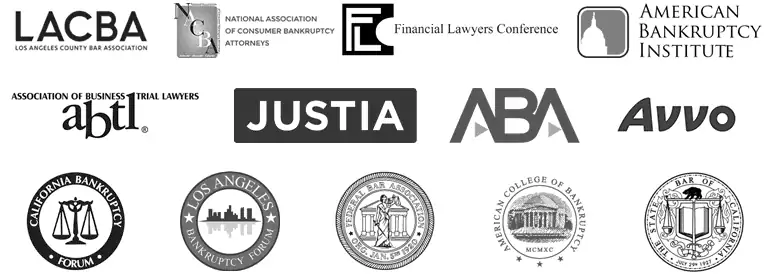Student Loans in Bankruptcy
The average student loan debt in the U.S. far outweighs credit card debt. It’s extremely difficult to justify the student loan debt to income ratio. While filing bankruptcy is beneficial to most circumstances, it is important to know that student loan bankruptcy can be more complicated than most other cases. If you are in a position where you find yourself asking, “what is student loan debt burden forbearance?” or “what If I can’t pay my student loan debt?” below you will find some critical information regarding student loan solutions and tips. A common question asked is, whether student loan debt is good or bad.
Chapter 7 Bankruptcy vs. Chapter 13 Bankruptcy on Student Loans
The process for filing bankruptcy in any case, begins with deciding whether a Chapter 7 or a Chapter 13 bankruptcy is right for you. With Chapter 7 bankruptcies, you must prove that you have little to no disposable income to repay any of your debts. With Chapter 13 bankruptcies, also known as “reorganization” people usually have enough income to repay some of their debts. Usually in exchange, you give up some property in order to repay your debtors. An advantage to filing a Chapter 13 bankruptcy for student loans is that the court determines the amount of repayment instead of your loan lender.
It’s no secret that student loan debt is crippling for college students. Both of these options wipe away most of your consumer debt, such as, credit card bills or medical bills and the process takes about four to six months. The only way you can file for student loan bankruptcy is if you can prove that you have an “undue hardship”. However, it is up to the court to decide whether your circumstance meets the standard.
The courts typically use one of two tests to determine whether or not your undue hardship qualifies, either they use the Brunner test or the Totality of the Circumstances test.
With The Brunner Test You Must Be Able To Prove Three Things:
- Paying off loans won’t allow you to live a minimal standard of living.
- Your financial situation is not going to change anytime soon.
- You have done all you can to pay loans up until the time of filing.
"*" indicates required fields
"*" indicates required fields
Chapter 7 Bankruptcy vs. Chapter 13 Bankruptcy on Student Loans
The process for filing bankruptcy in any case, begins with deciding whether a Chapter 7 or a Chapter 13 bankruptcy is right for you. With Chapter 7 bankruptcies, you must prove that you have little to no disposable income to repay any of your debts. With Chapter 13 bankruptcies, also known as “reorganization” people usually have enough income to repay some of their debts. Usually in exchange, you give up some property in order to repay your debtors. An advantage to filing a Chapter 13 bankruptcy for student loans is that the court determines the amount of repayment instead of your loan lender.
It’s no secret that student loan debt is crippling for college students. Both of these options wipe away most of your consumer debt, such as, credit card bills or medical bills and the process takes about four to six months. The only way you can file for student loan bankruptcy is if you can prove that you have an “undue hardship”. However, it is up to the court to decide whether your circumstance meets the standard.
The courts typically use one of two tests to determine whether or not your undue hardship qualifies, either they use the Brunner test or the Totality of the Circumstances test.
With The Brunner Test You Must Be Able To Prove Three Things:
- Paying off loans won’t allow you to live a minimal standard of living.
- Your financial situation is not going to change anytime soon.
- You have done all you can to pay loans up until the time of filing.
TYPES OF BANKRUPTCY
Chapter 13 Bankruptcy
For High Income and Asset Owners
Chapter 11 Bankruptcy
For Businesses and Corporations
Foreclosure Prevention
For Struggling Homeowners
With The Totality of The Circumstances Test The Court Considers Three Things:
- Your past, present and possible future financial resources.
- Any reasonable living expenses.
- Other relevant circumstances.
Whether student loan debt is viewed either as good or bad, there are other options to consider when thinking about possible solutions. The first is, finding a repayment plan that works for your current income, payments that are suggested are not set in stone and can be negotiated down to an amount that works for you. Another consideration would be to consolidate your loans. If you come out of college with several loans, it can be a little overwhelming to keep track of when each payment needs to be made. Be aware that consolidating does not necessarily lower your monthly but it keeps it all a little more manageable.
If you have a substantial amount of student loan debt and want to consider going the route of filing bankruptcy it would be a good idea to consult with a local bankruptcy attorney so they may determine which test the courts in your jurisdiction have used in the past. If they are unable to verify your undue hardship circumstance then your student loan debt will not be discharged and you will be responsible for paying them in full. Contact the Goldbach Law Group to determine how to eliminate student loan debt quickly!

